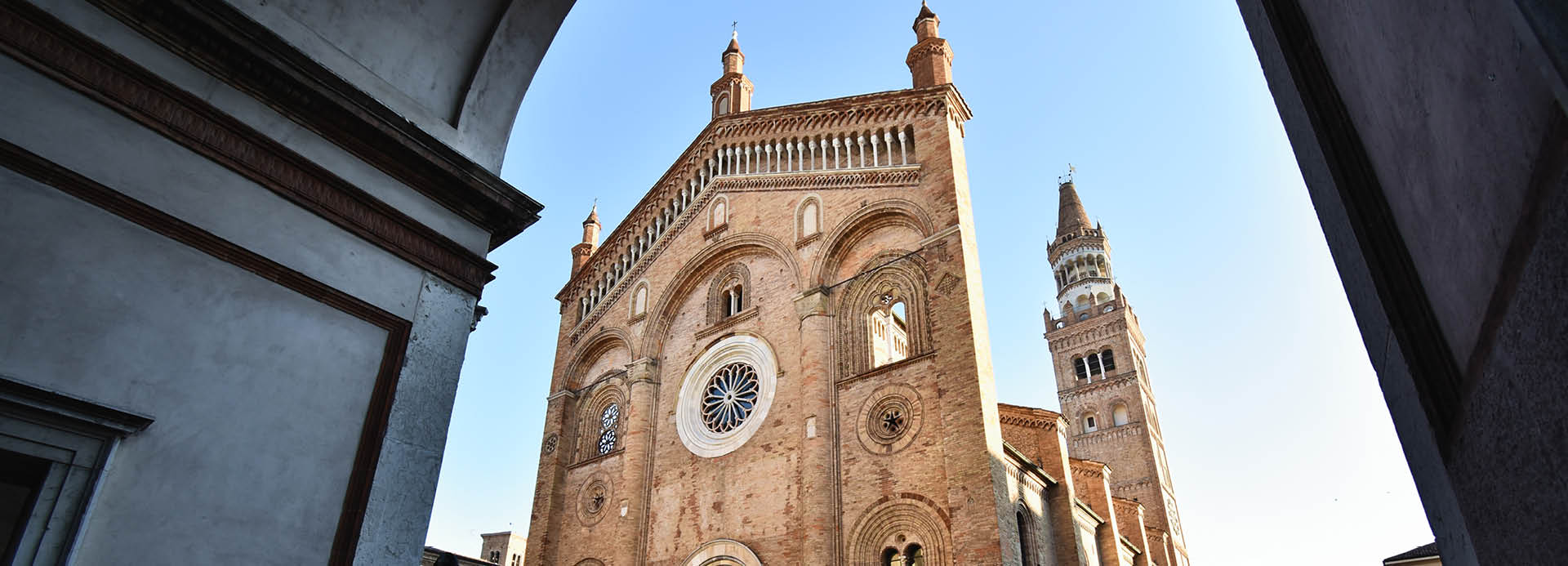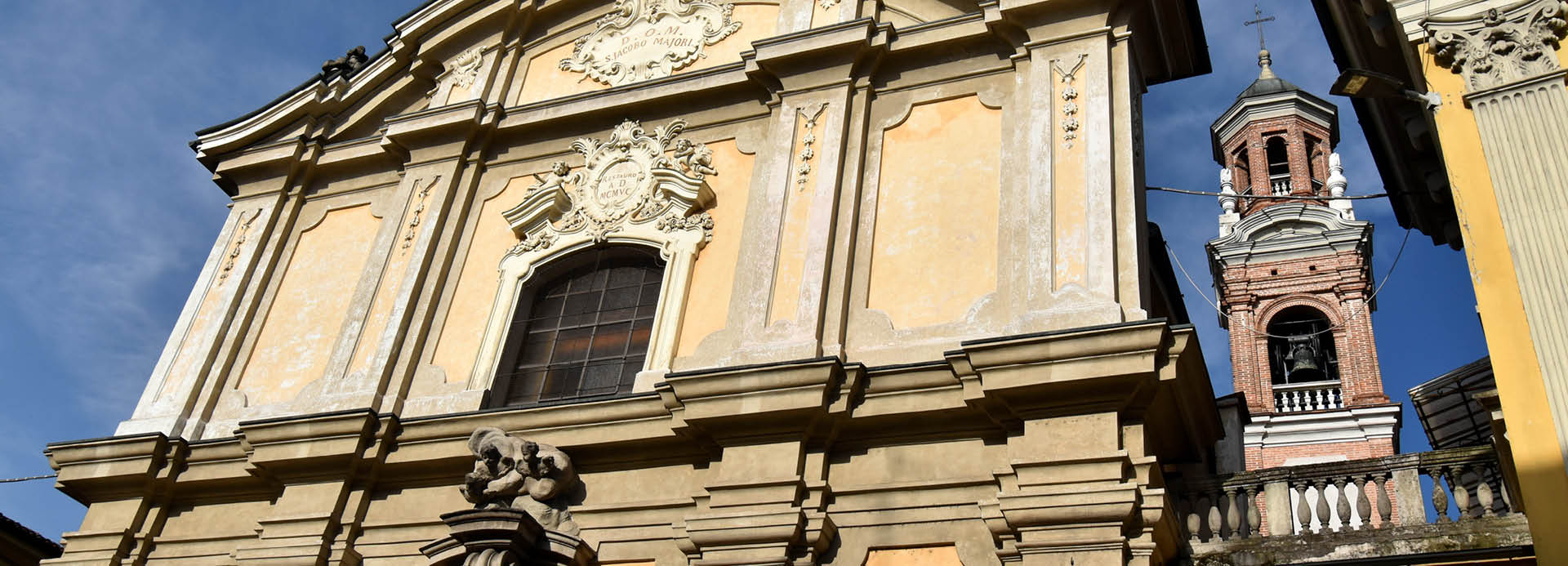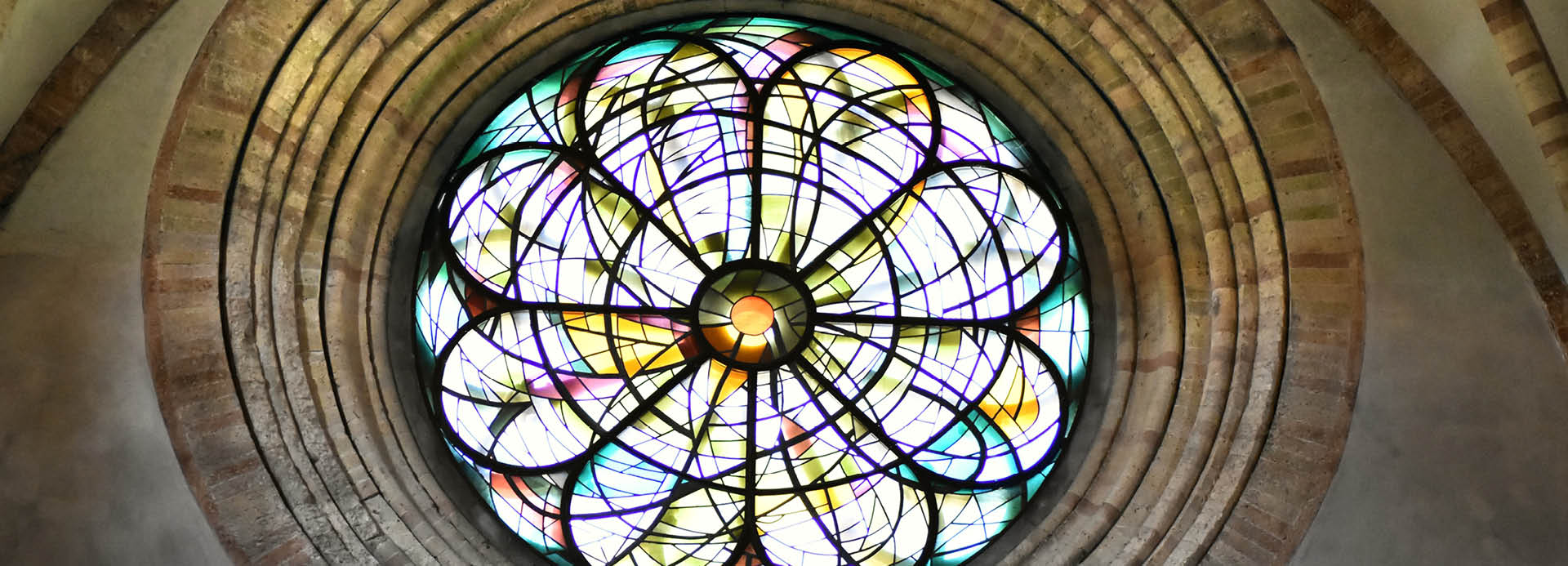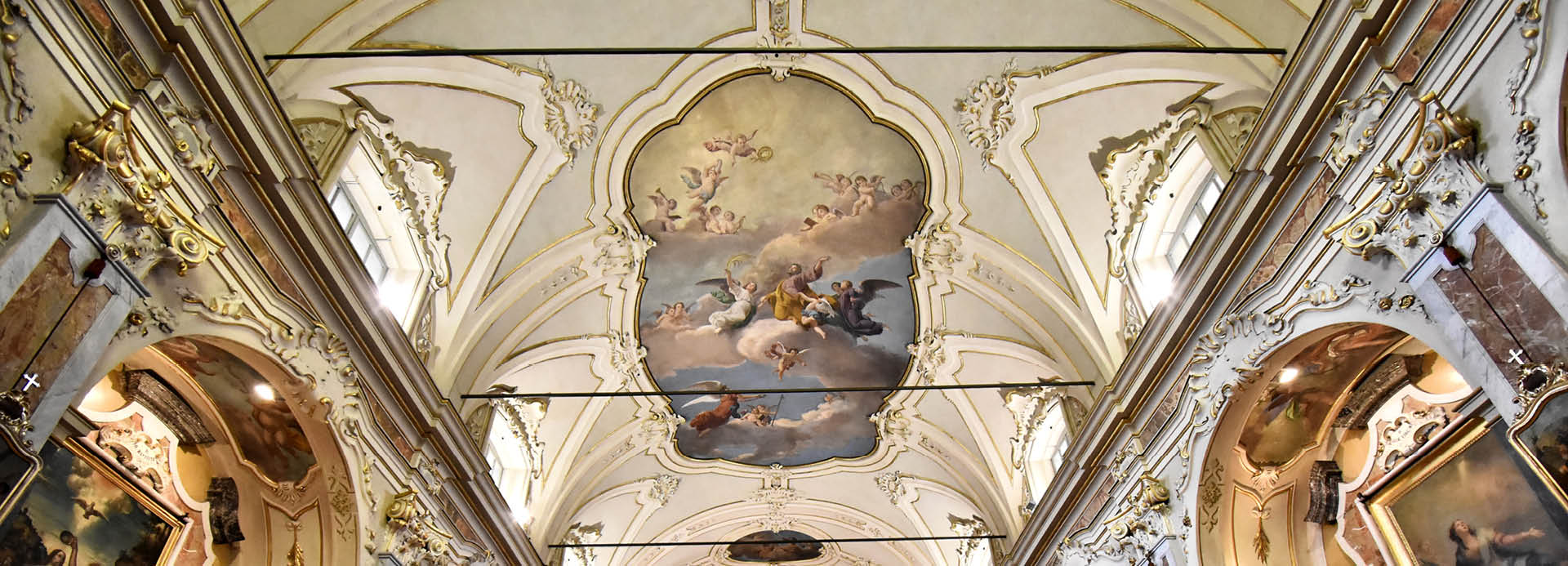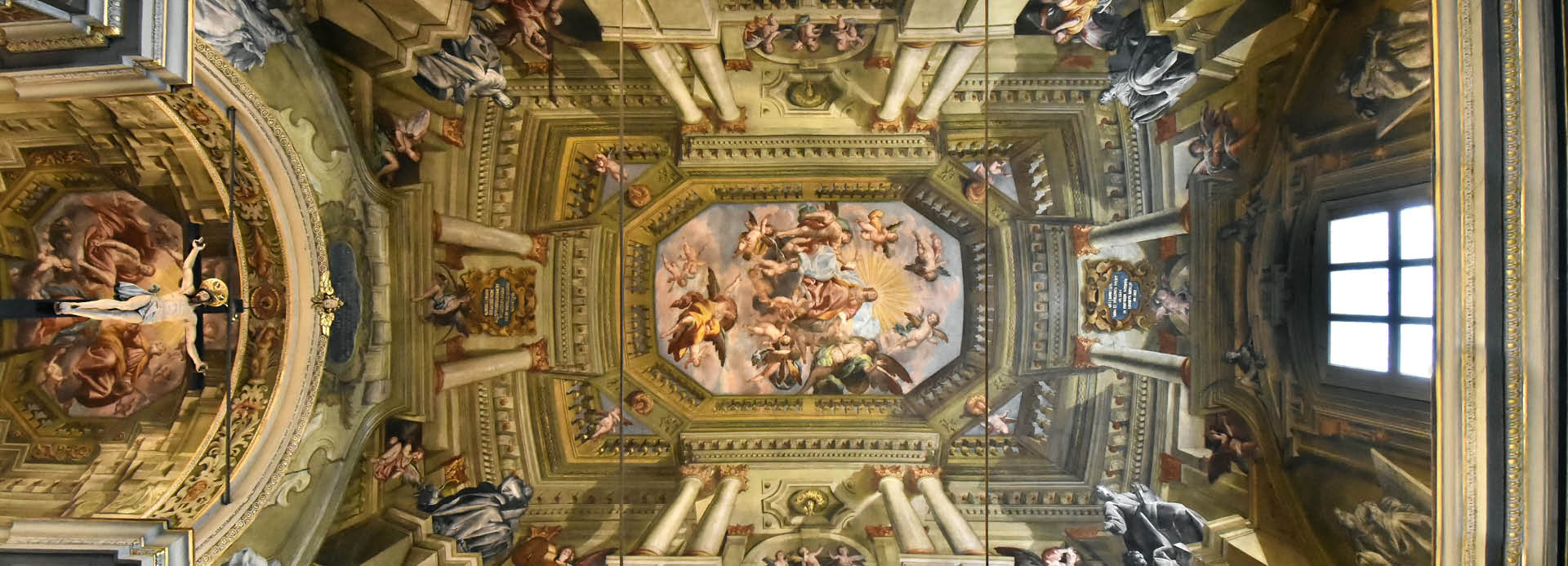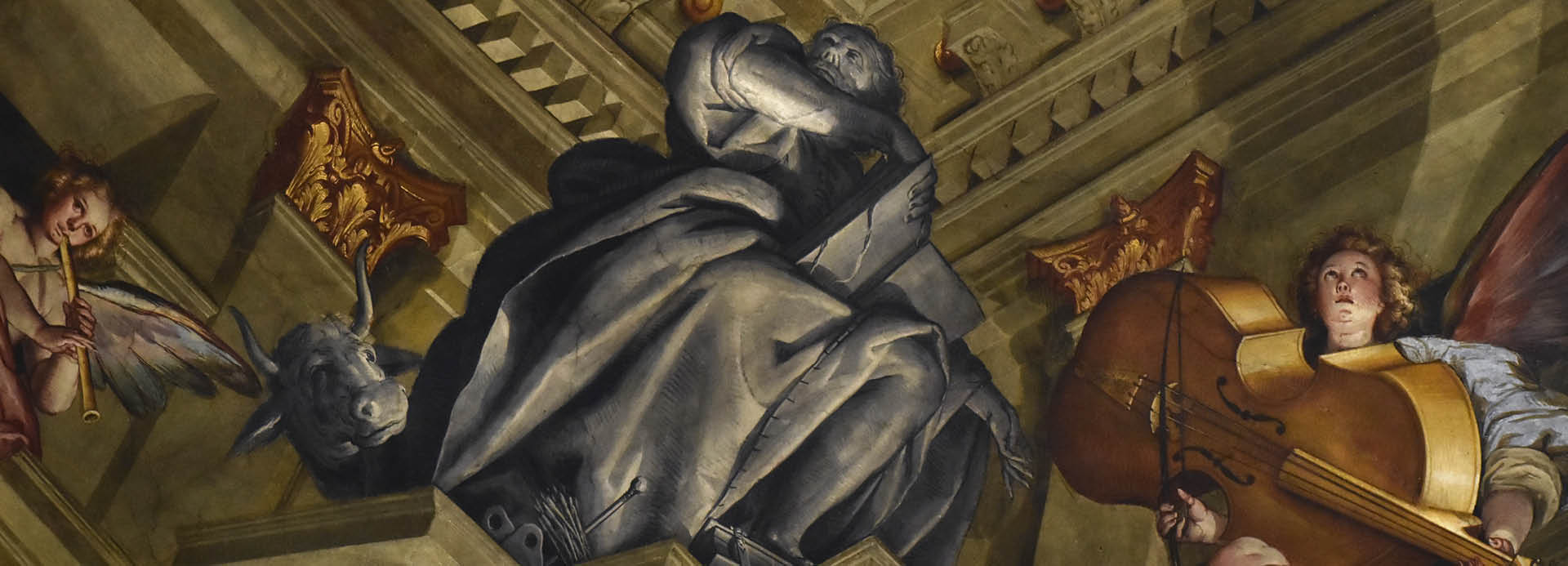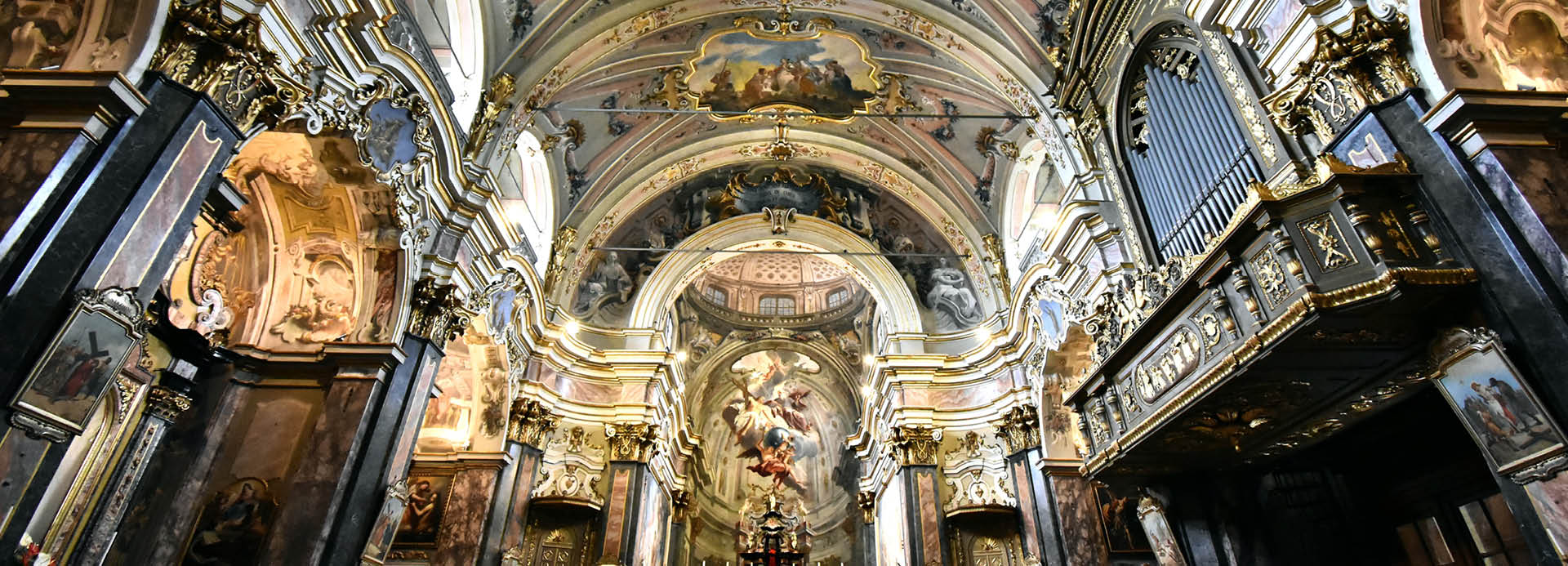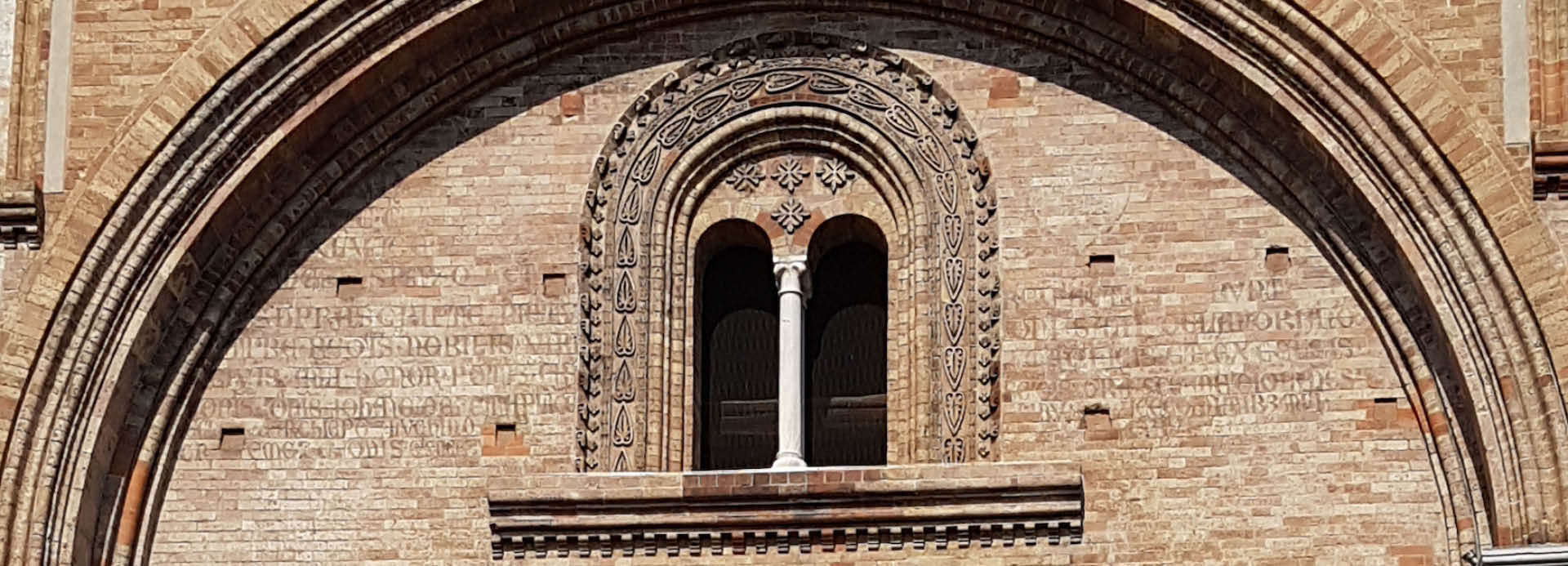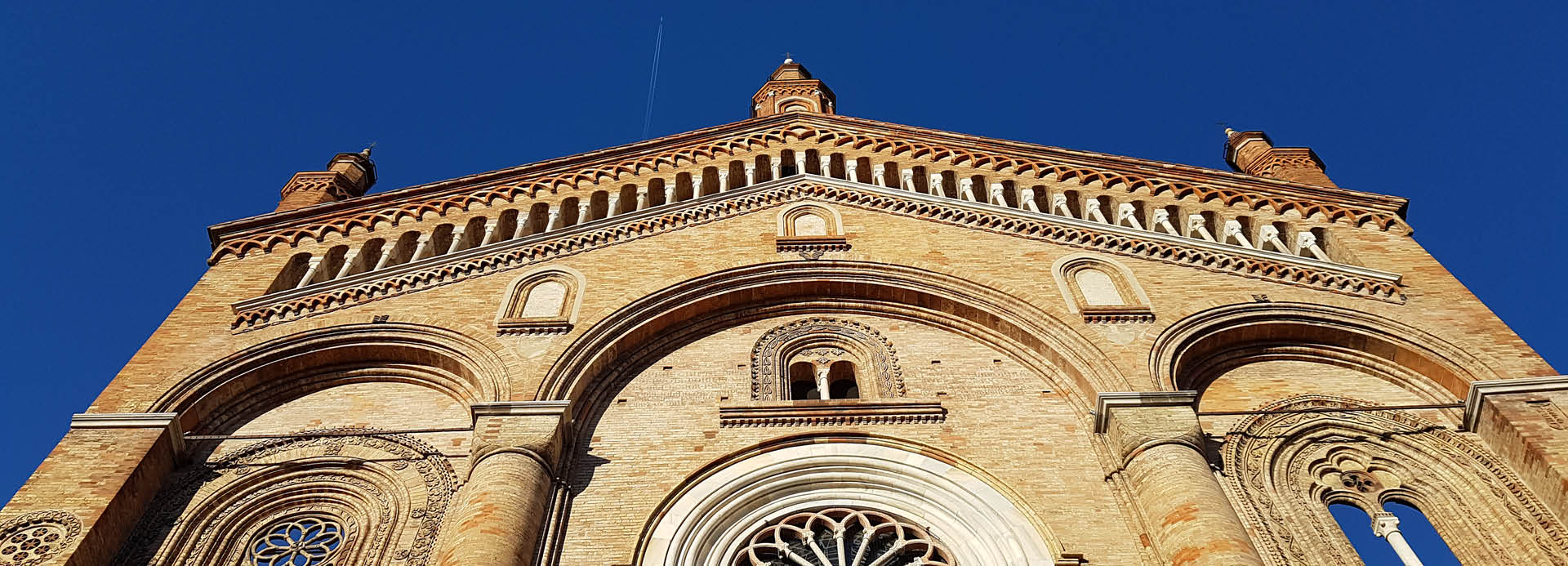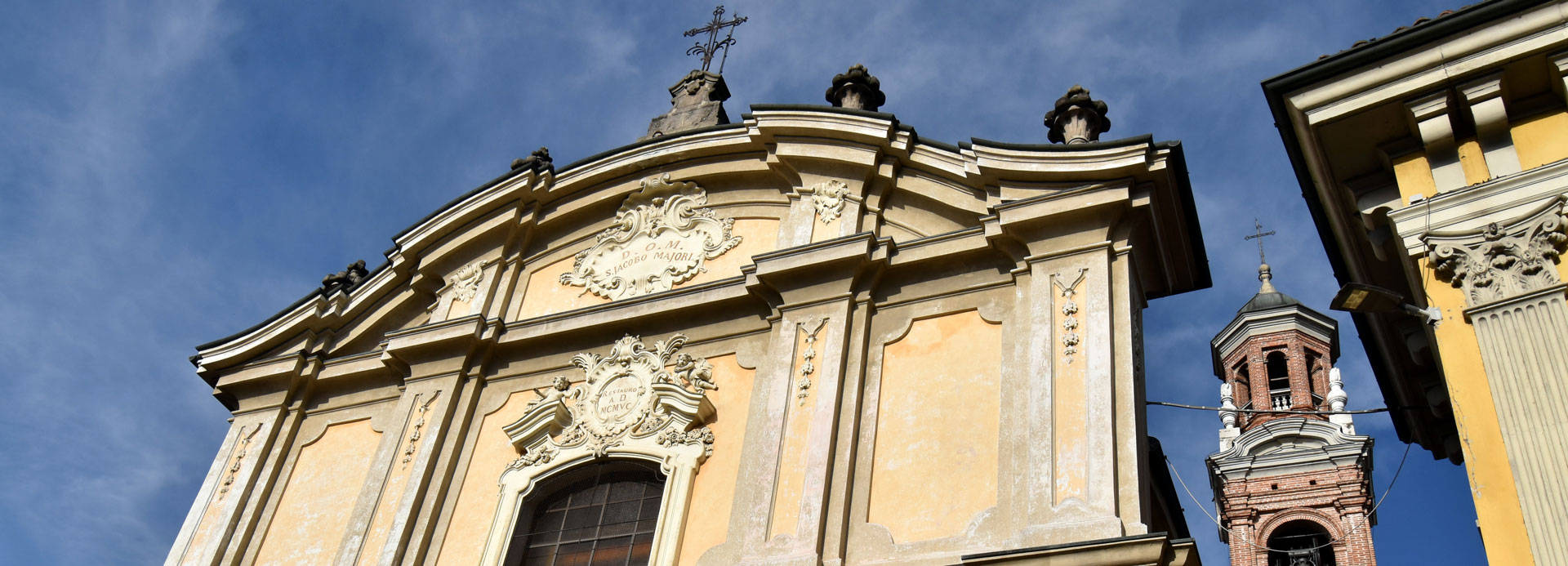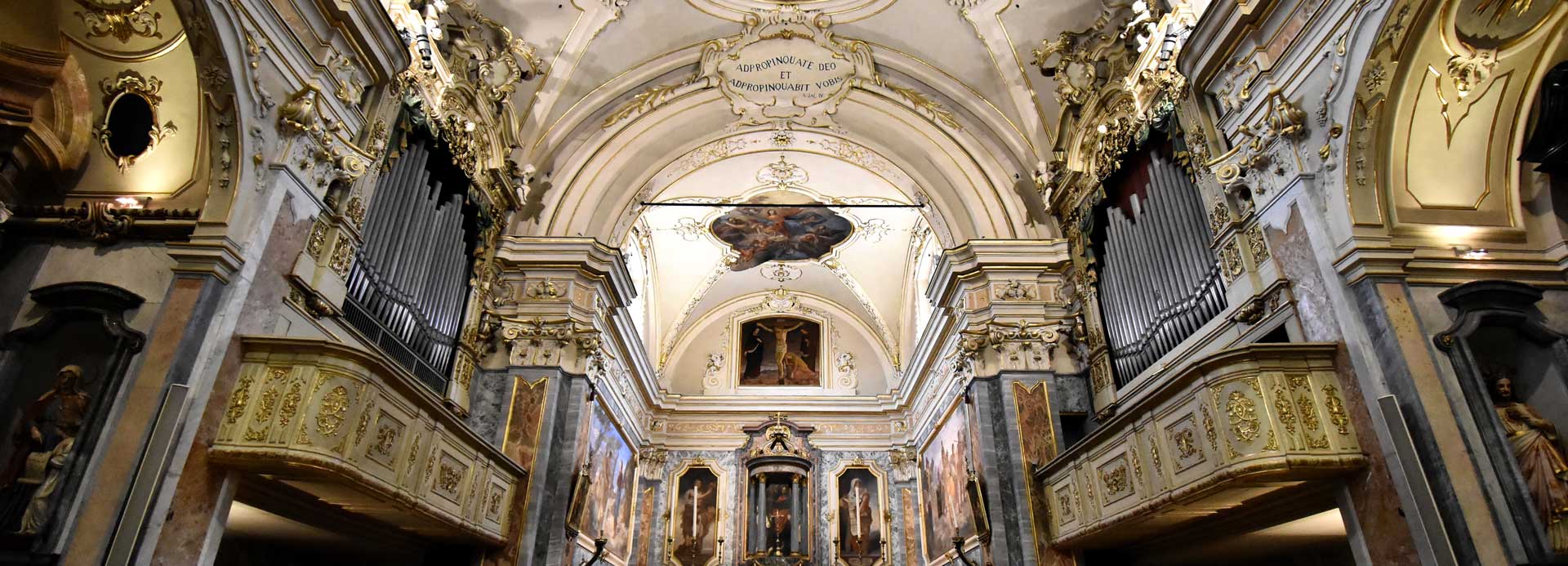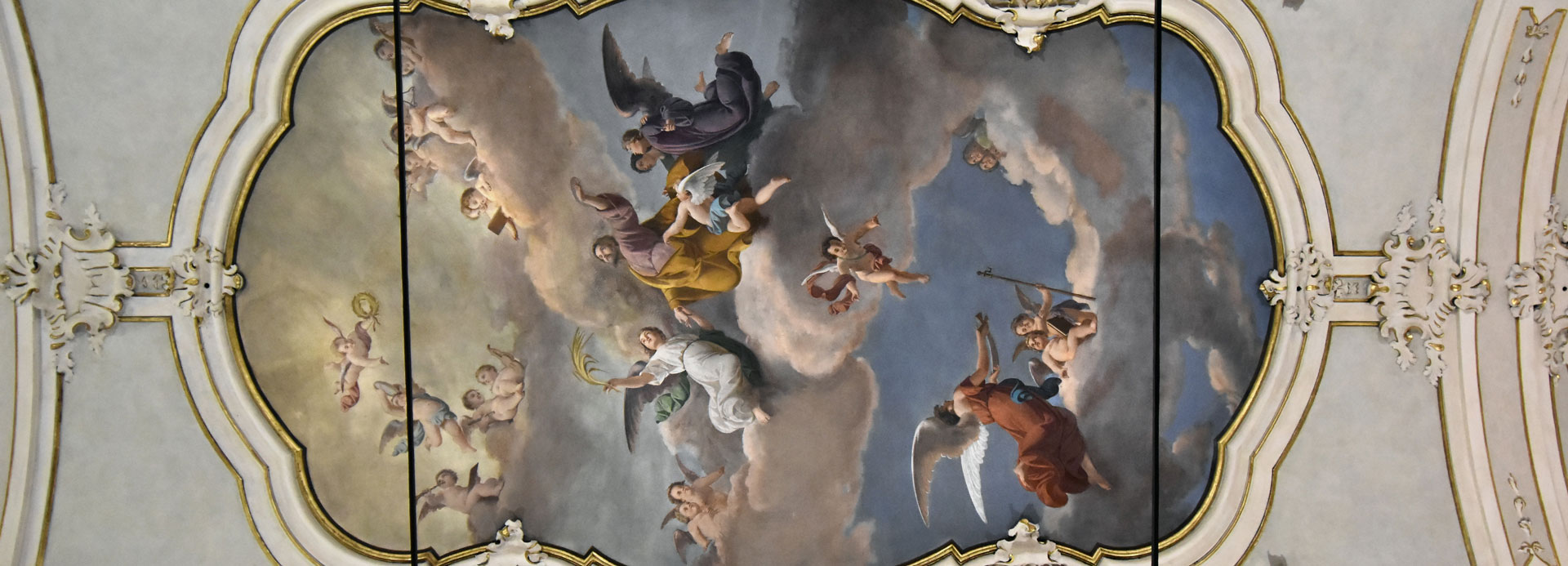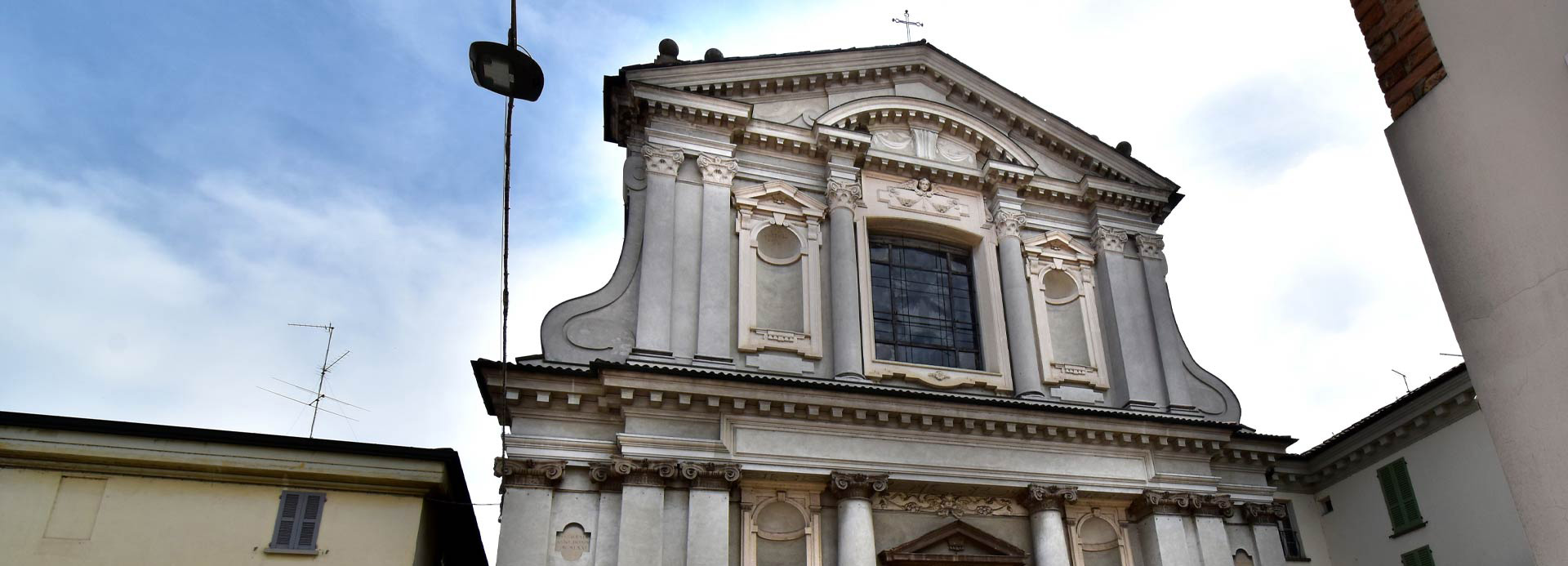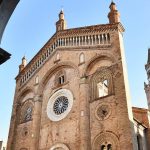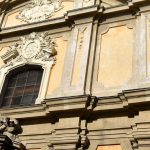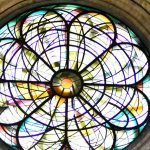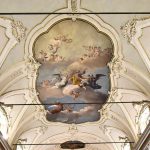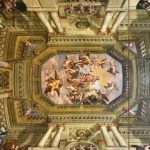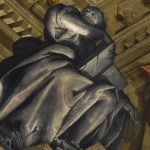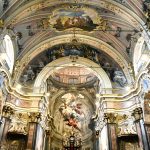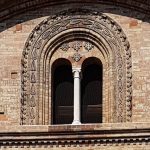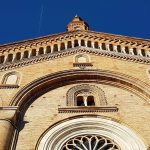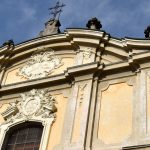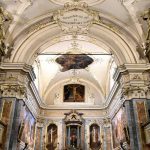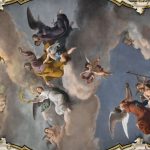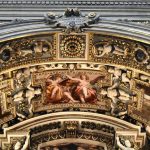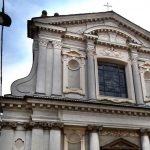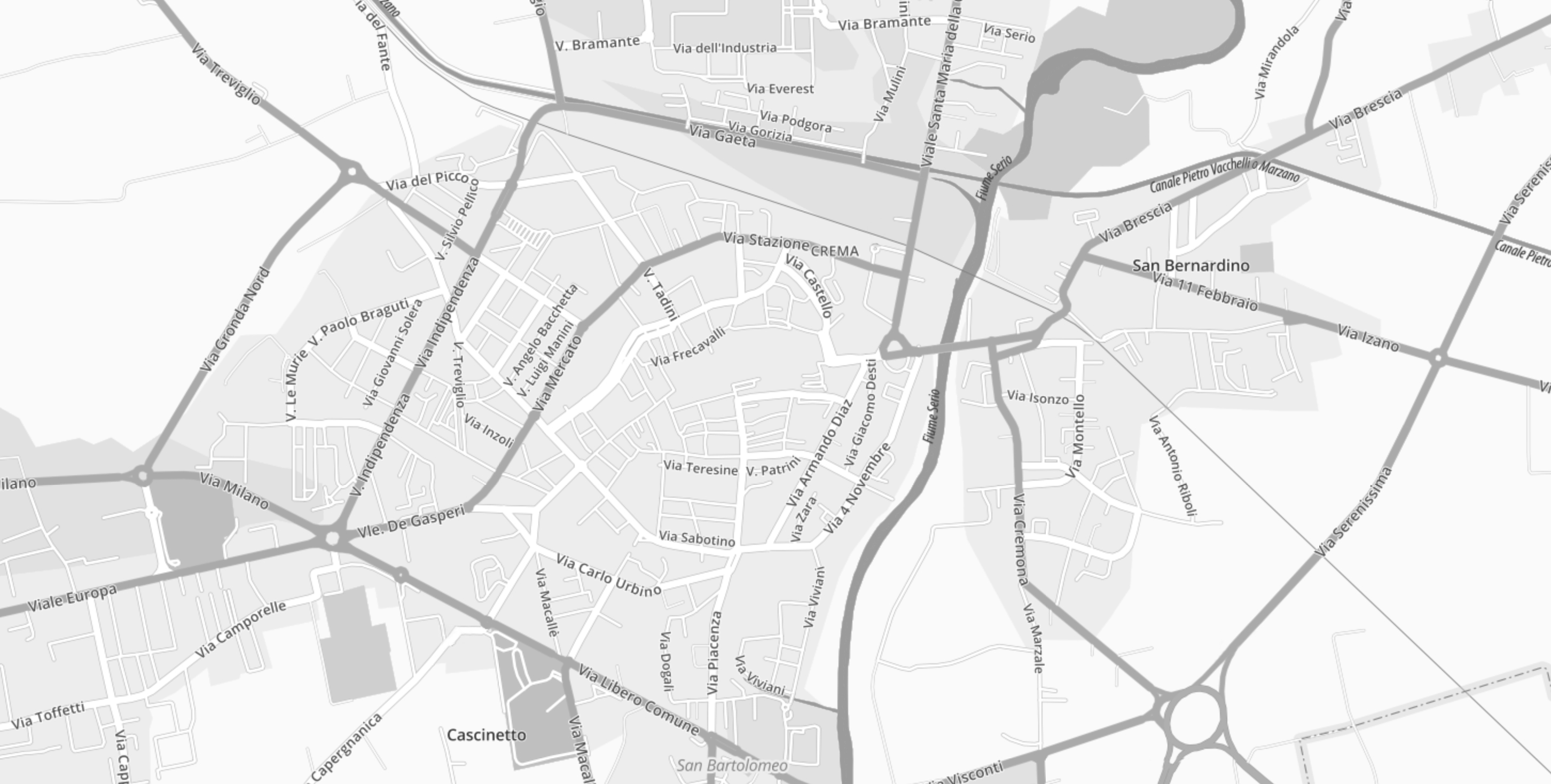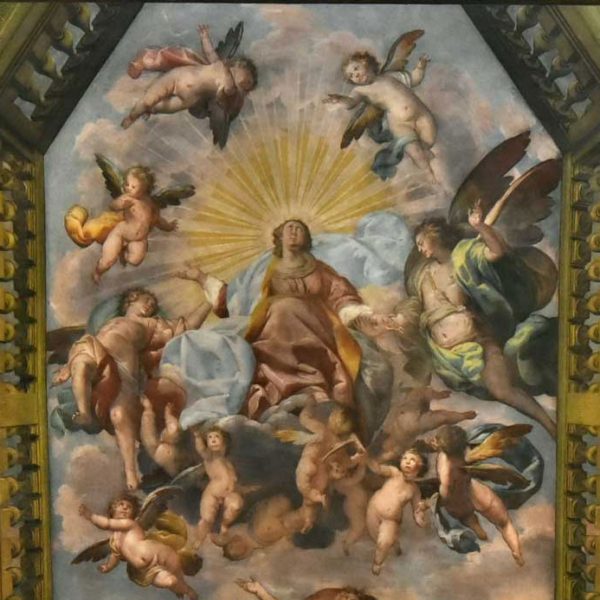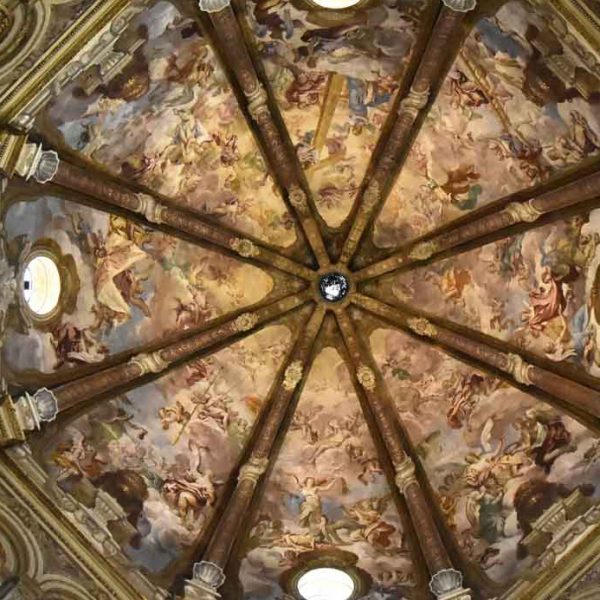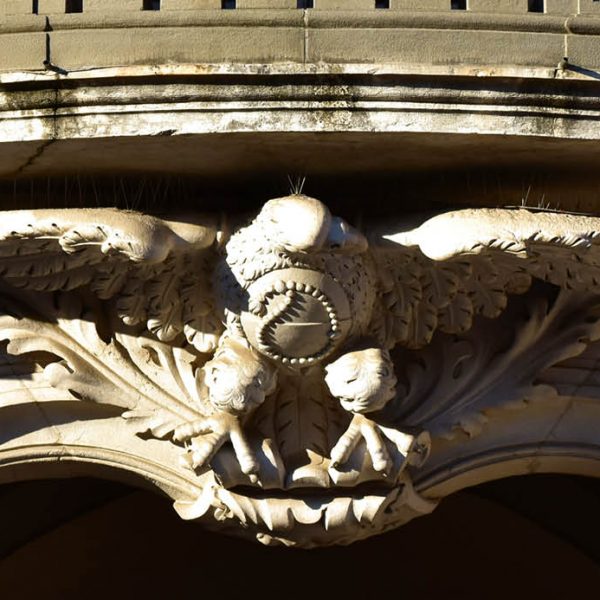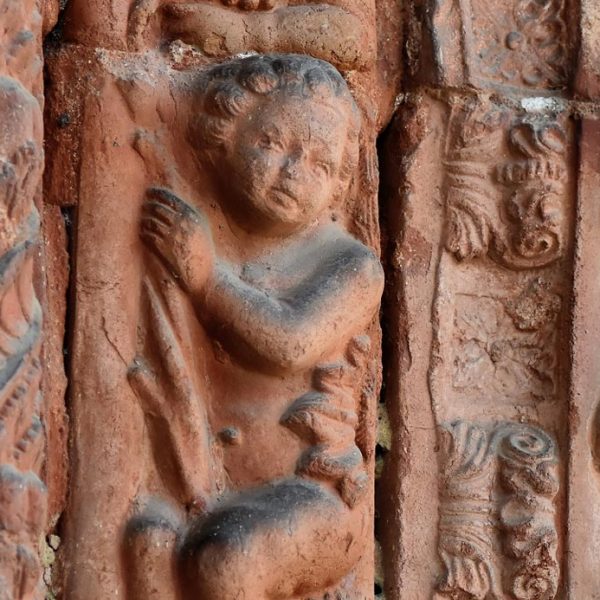 Tutti gli itinerari
Tutti gli itinerari
From the Lombard Gothic to the Renaissance
The Churches in the city centre are real masterpieces and they come in all shapes and sizes, from the Lombard Gothic of the Cathedral, to the Renaissance style Church of Santa Maria Della Croce, which is just outside the city centre. The 16th century church of San Bernardino represents a magnificent sacred art gallery. The Baroque Age is clearly represented by the churches of San Benedetto, Santa Maria Delle Grazie and Giovanni Battista, with their stunning internal decorations covered entirely in frescoes. Then, we have some testimonies of the 18th century with the churches of Santissima Trinità and San Giacomo.
Our itinerary starts in Piazza Garibaldi with the church of San Benedetto.
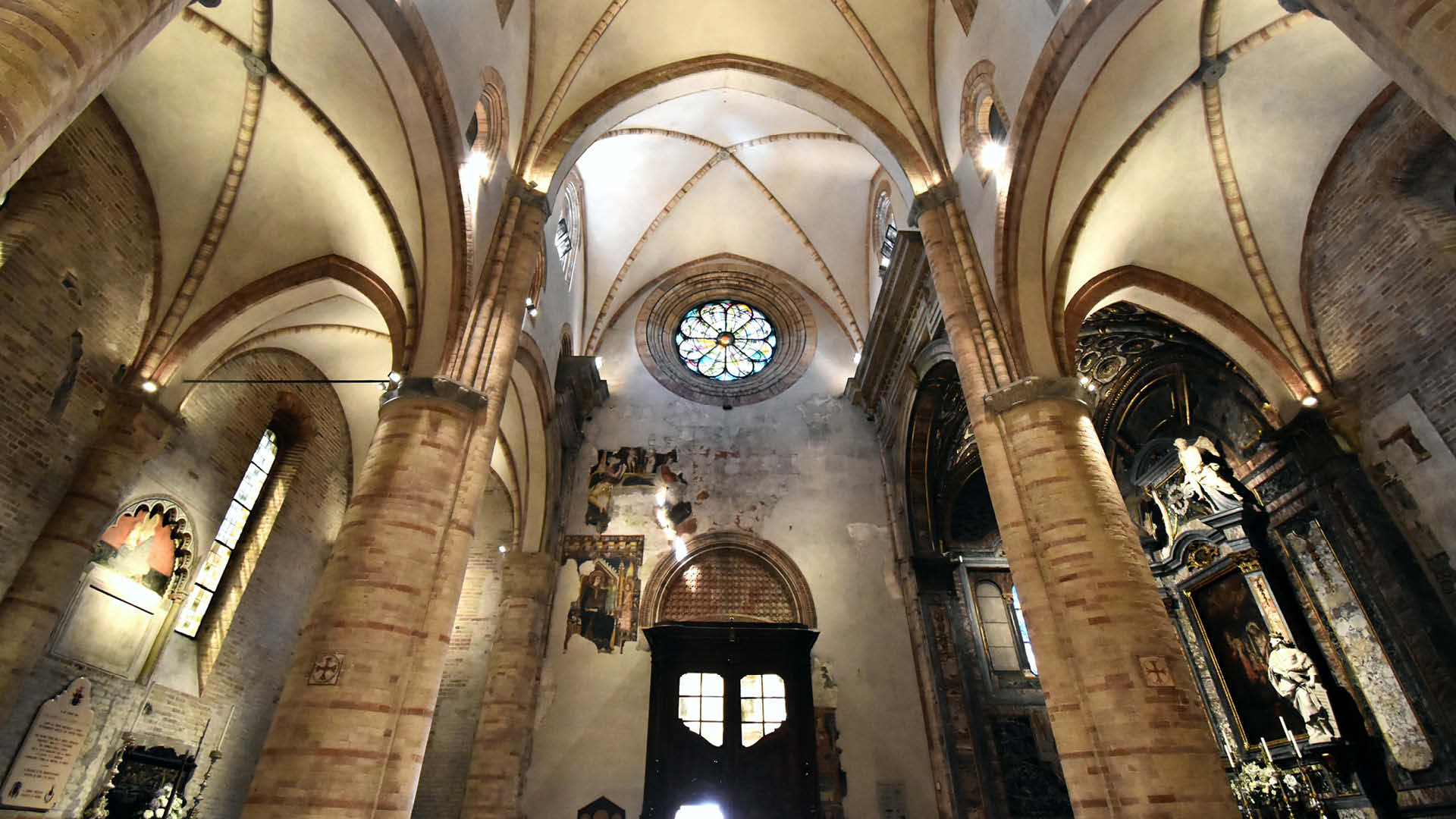
The Church of San Benedetto was built on the site of a private house of worship, which was then donated to the Benedictine monks. The church that you can see today was rebuilt in the Baroque Age (1621-1623) by the architect Francesco Maria Richini (Milan, 1584-1658). The façade has two orders, both decorated with columns and pillars to reveal its monumental nature. The internal structure is composed of a single nave with four side chapels, each one containing frescoes and paintings by several of the most important artists of Crema, Carlo Urbino (Crema, 1525-1585), Tommaso Pombioli (Crema, 1579-1636 circa), Gian Giacomo Barbelli (Offanengo, 1604-Calcinate, 1656) and Giovan Battista Botticchio (Verona, c.1649-Turin, c.1726). The part which houses the presbytery is instead decorated with a series of paintings by Martino Cignaroli (Verona, 1649-Turin, 1726).
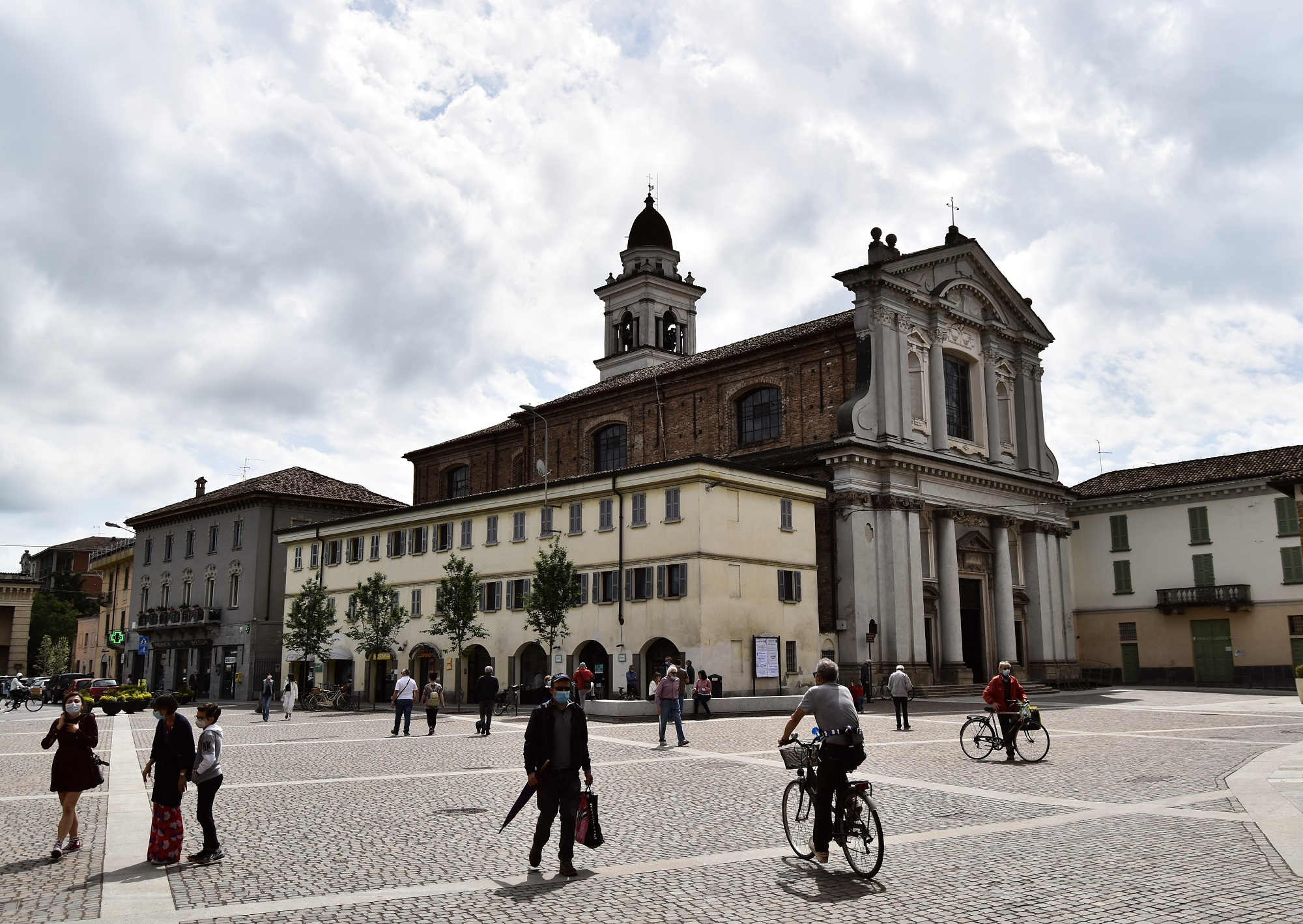
From this first church, our itinerary goes on towards the most important and central Piazza Duomo, literally the heart of the town, where you can admire the town Cathedral. The Duomo was built using terracotta bricks, typical building material of the Po Valley, between 1284 and 1341, on the site of an existing Romanesque church, whose foundations are preserved in the crypt. This church represents an example of Lombard Gothic style that merges many architectural elements typical of the previous Romanesque Age (e.g. the main door) with the new trends of the Gothic style (e.g. the rose window in white marble on the façade).
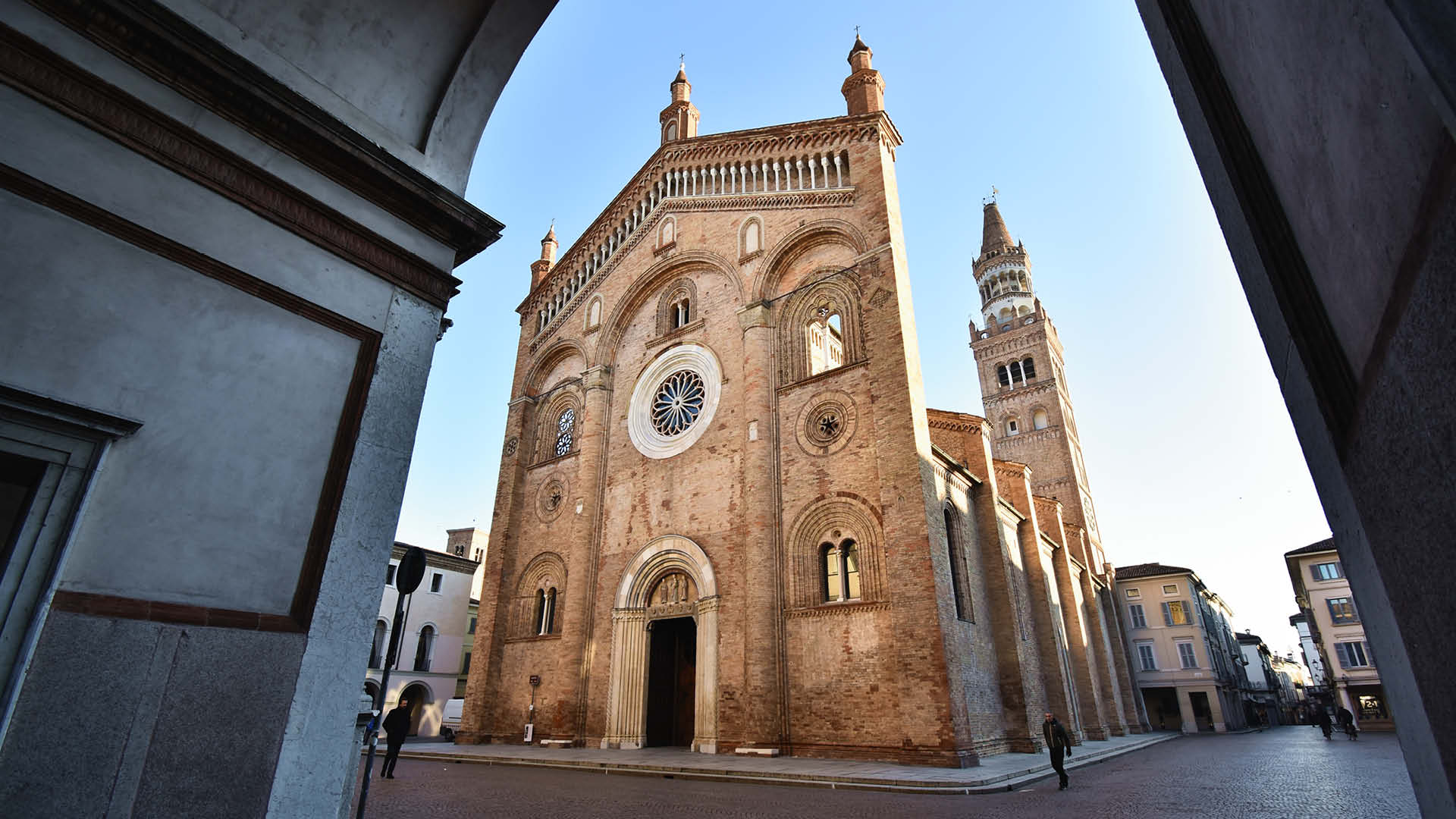
The interior retains only a small part of the original fresco decoration, which once covered the entire walls, but is home to many examples of local art. Worthy of particular mention is the wooden Crucifix (c.1320-40) kept inside the church. Legend has it that when it was set on fire in 1445, the figure of Christ is said to have drawn up his legs away from the flames and for centuries has been venerated by the Cremaschi, who address him in times of particular need. Another devotion equally dear to the Cremaschi is towards St Pantaleone, patron saint of the town. San Pantaleone was a doctor said to have healed people from the plague (1361). The altar to the right of the apse is dedicated to him.
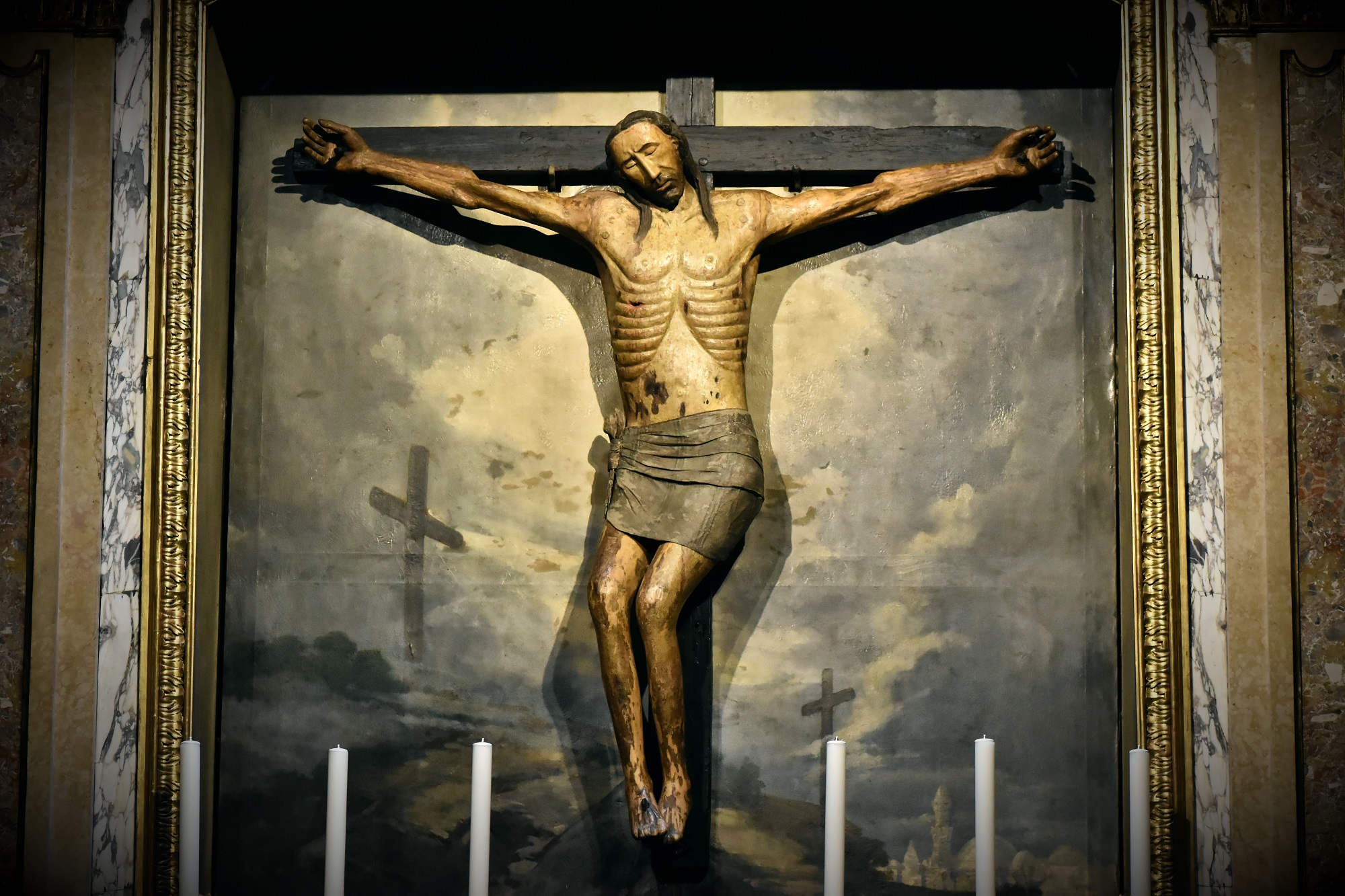
Just behind Piazza Duomo, on the corner between the two streets, Via Battisti and Via Frecavalli, stands the church of San Bernardino in Città also named Auditorium Bruno Manenti. It was built between 1518 and 1534 to commemorate a visit to Crema by San Bernardino da Siena one hundred years earlier. The exterior is very simple and sparse. The church, now used as an auditorium for its excellent acoustic qualities, is also called the art gallery of the city as the interior is rich in paintings both by local painters (Civerchio, Ferrario, Pombioli, Lucini, Picenardi) and by artists from outside Crema (Pietro Marone, Galliari, Cignaroli). The monochrome decorations of the vaulted ceiling are the work of the scenographer Luigi Manini (Crema, 1848-Brescia, 1936), while the Annunciation of the triumphal arch, though it was heavily restored, is a work by Vincenzo Civerchio (Crema, 1470 circa – 1544 circa). At the end of Via XX Settembre, at the end of the square on the left you cross Via delle Grazie, which leads to a special little church.
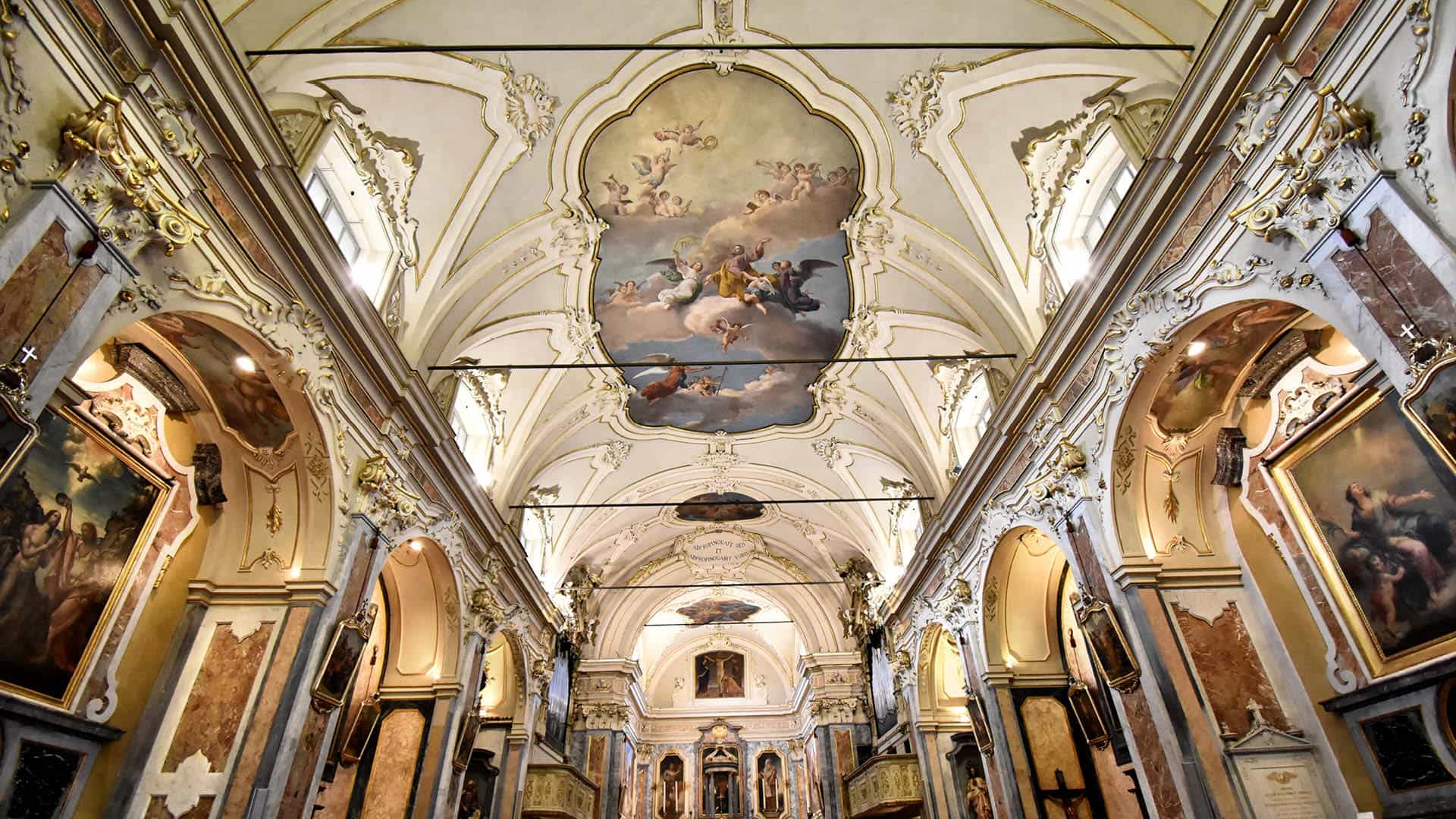
Returning to Piazza Duomo and passing the Torrazzo, let’s walk along Via XX Settembre, where we can meet the eighteenth-century church of the Holy Trinity. Built between 1737 and 1740 on a project by the master builder Andrea Nono, it stands out for the presence of two richly decorated façades in Rococo style. The bell tower is dominated by the copper statue of the Savior which rotates according to the direction of the wind.
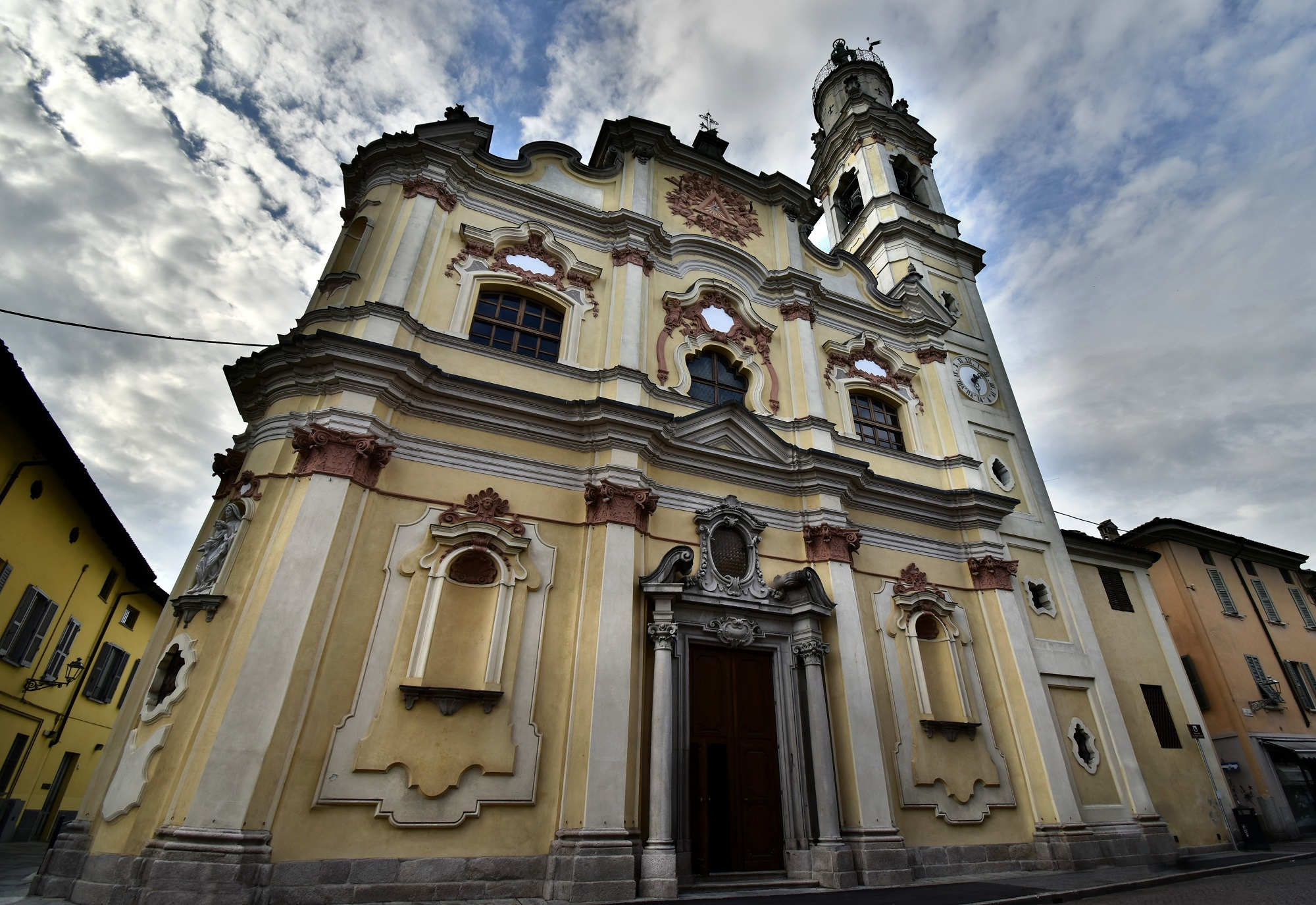
The Church of Santa Maria Delle Grazie was built in 1601 to house a painting of the miraculous figure of the Virgin and Child which today sits behind the altar of the church. The painting had previously been kept in the nearby tower, Torrione della Virgine , visible from the Campo di Marte park. A few years later, the internal decoration was executed by the famous painter Gian Giacomo Barbelli (Offanengo,1604-Calcinate,1656), which recounts scenes from the life of the Virgin Mary, with typical Baroque style scenographic and theatrical effects. In the middle of the vaulted ceiling we can see the Assumption and The Evangelists in the corners. Situated on either side of the entrance, you can admire the figures of San Rocco and San Sebastiano and the Adoration of the Magi.
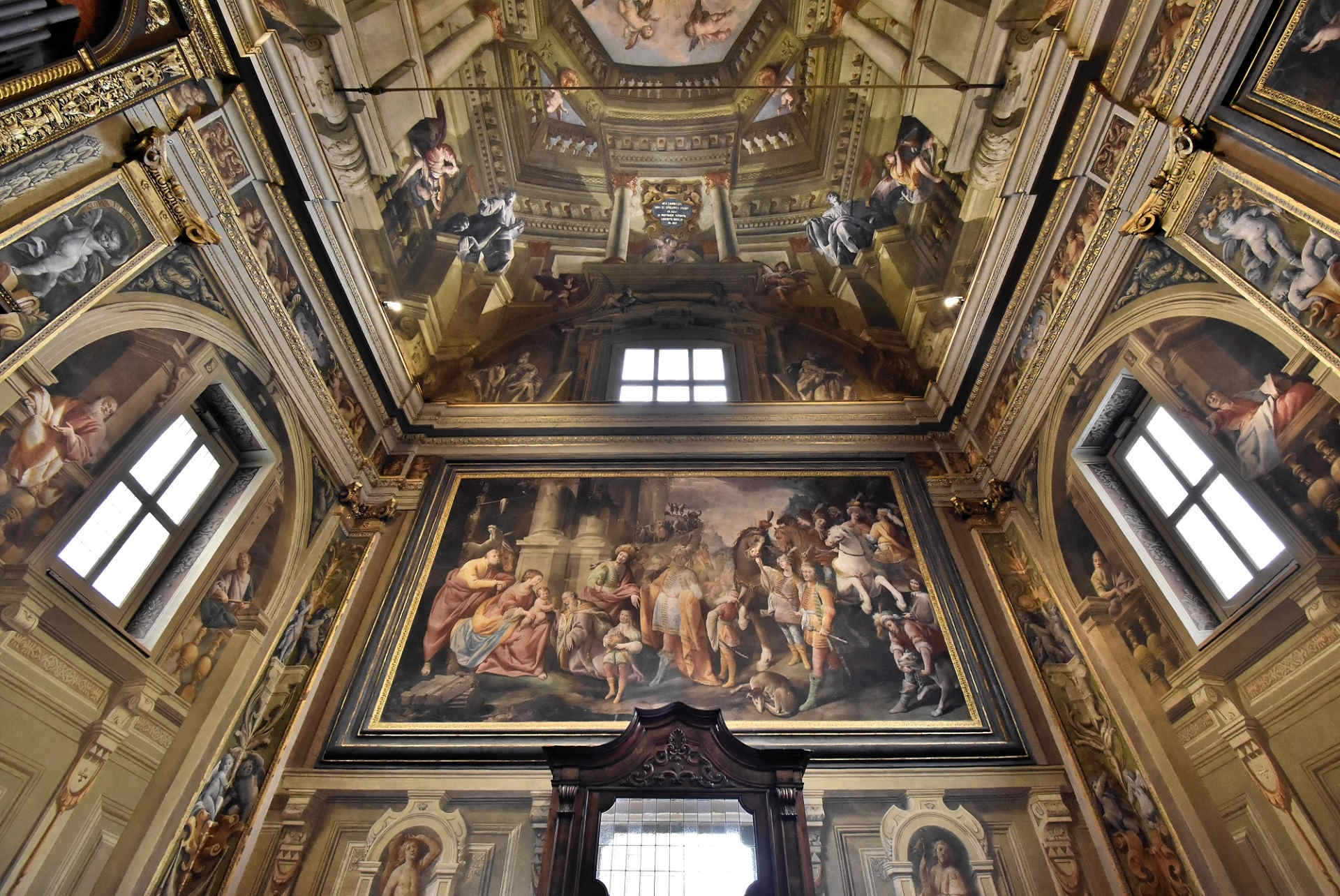
Back on your walk through some of the little side streets, you should reach Via Matteotti, where you can see another two notable churches. The Oratorio of San Giovanni Battista, which was built by the members of a charitable association of the time and used as their place of worship, in fact if you raise your eyes you’ll see the inscription ‘Charitas’ above the door. This church is said to have been built on the ruins of Caterina Degli Uberti’s home, who you’ll hear more about when we visit the Church of Santa Maria. The fresco decorations of the interior were painted by Gian Giacomo Barbelli in 1636, and represent The Life of San Giovanni Battista and Acts of Misericordia. He also produced the two depictions of the Annunciation, on the other hand the painting of the Head of John the Baptist on the altar was painted by Camillo Procaccini.
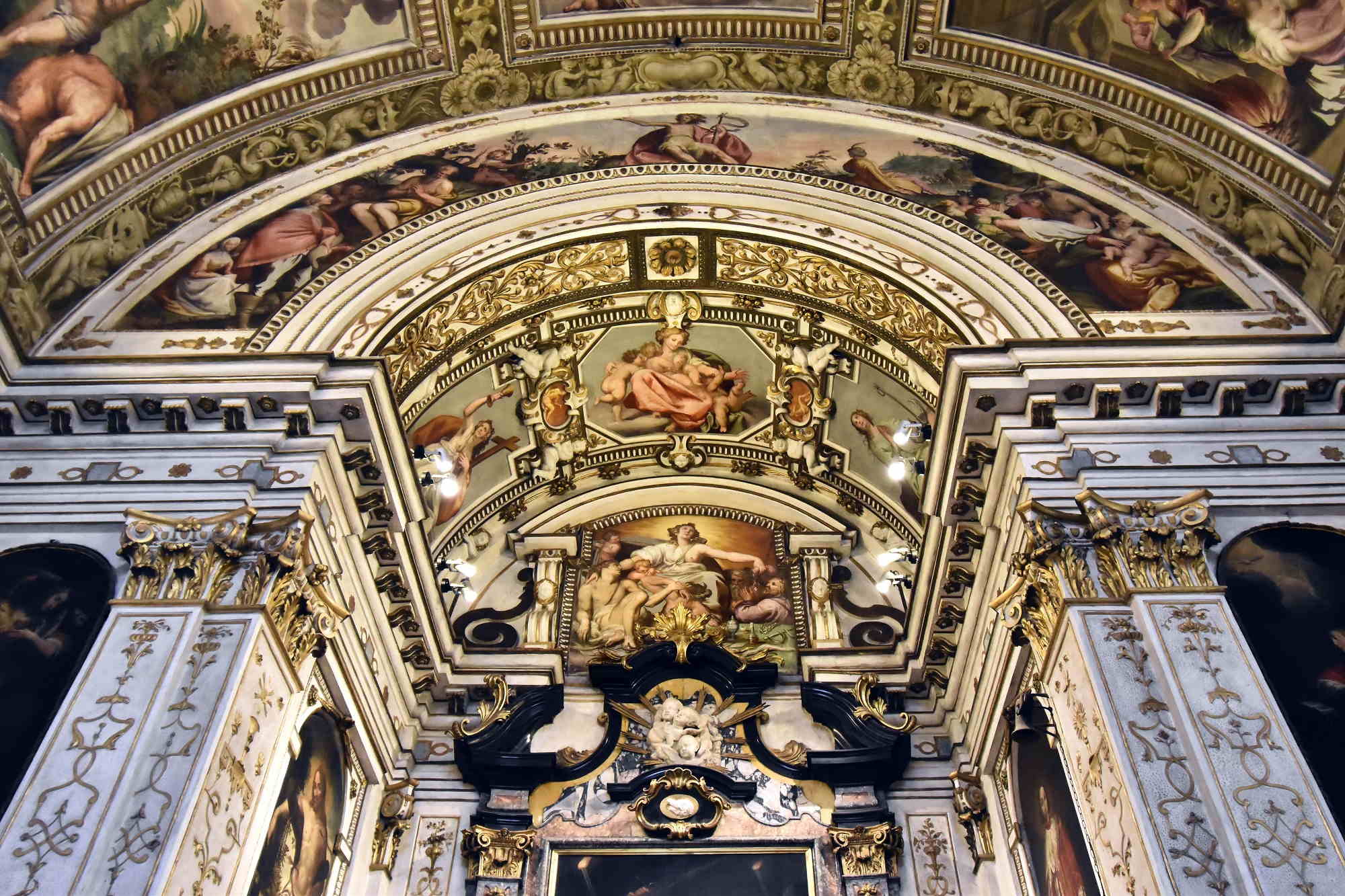
The parish church of San Giacomo in its current form, comes from its fifth reconstruction in the 1700s, and it is the only church in the town with access by a staircase. The fresco decoration and the paintings of the presbytery recount the events of the apostle to whom the
church is dedicated. The side chapels are rich with paintings by Civerchio, Legnanino, Pitocchetto and Lucini.
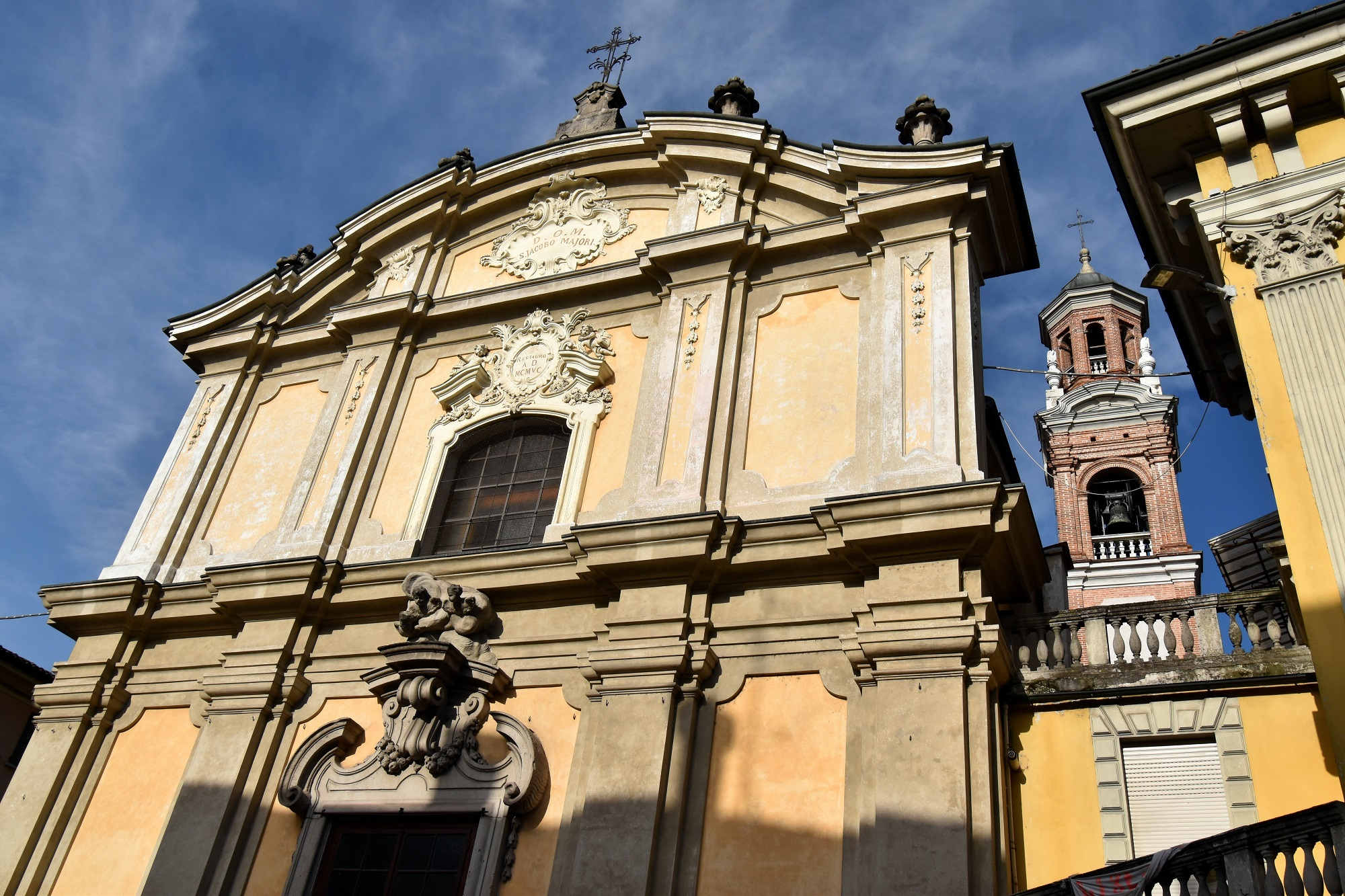
The last must-see place of worship in Crema is the Church of Santa Maria della Croce, which sits outside the city centre. To reach it, you can choose between a pleasant 20-minute walk along the tree-lined avenue of Santa Maria, or you can decide to go by car. The church was built according to the wishes of the people of Crema, after the appearance of the Virgin to Caterina degli Uberti, a young woman murdered by her husband in 1490.
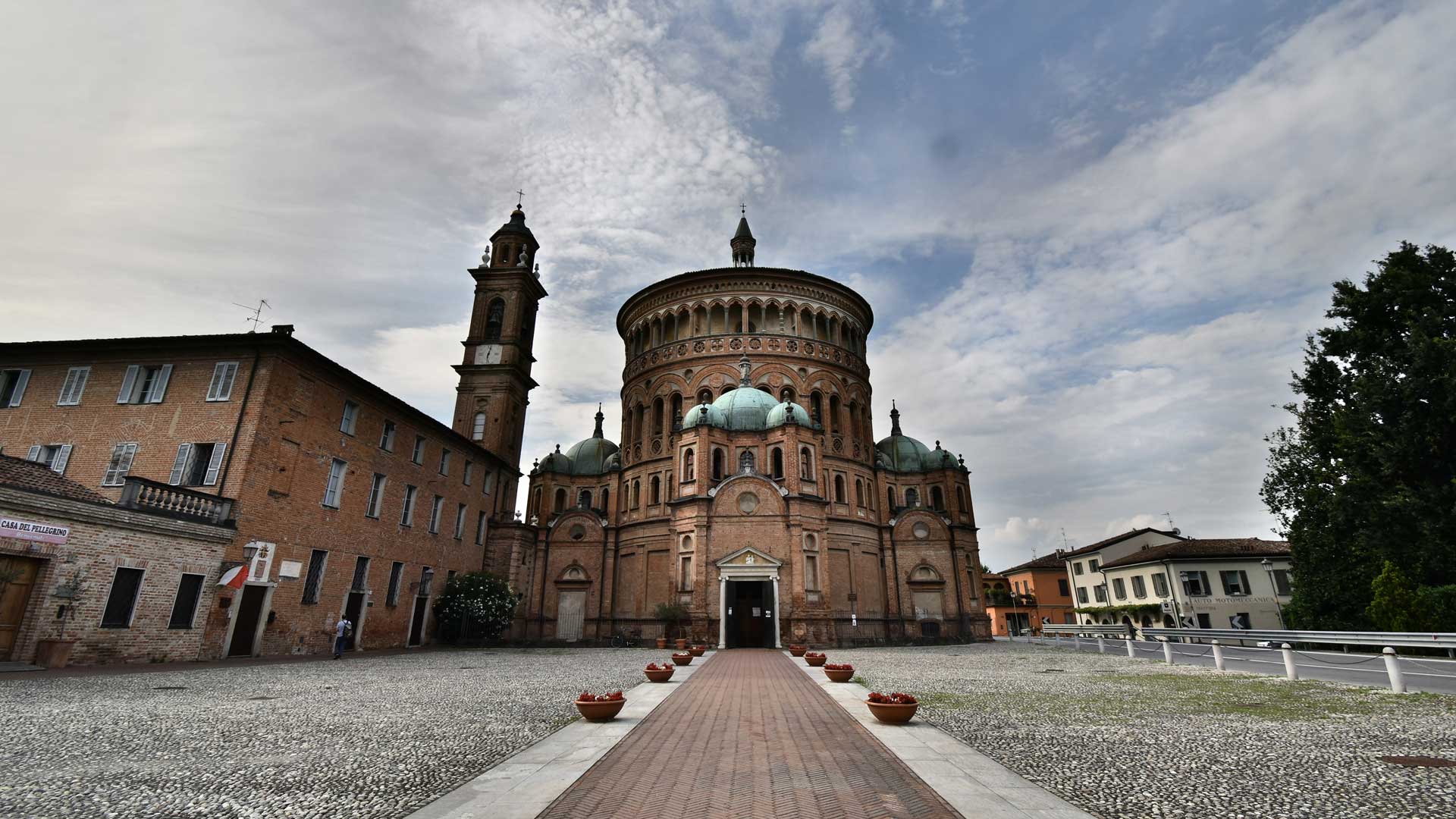
The design of the church was handed over to Giovanni Battaglio from Lodi (c.1440-1500), who had previously worked with Bramante, who invented the centrally planned building inspired by Renaissance architecture. However, after a disagreement with his patrons in 1499, the works were finished in 1501 by the foreman Antonio Montanari.
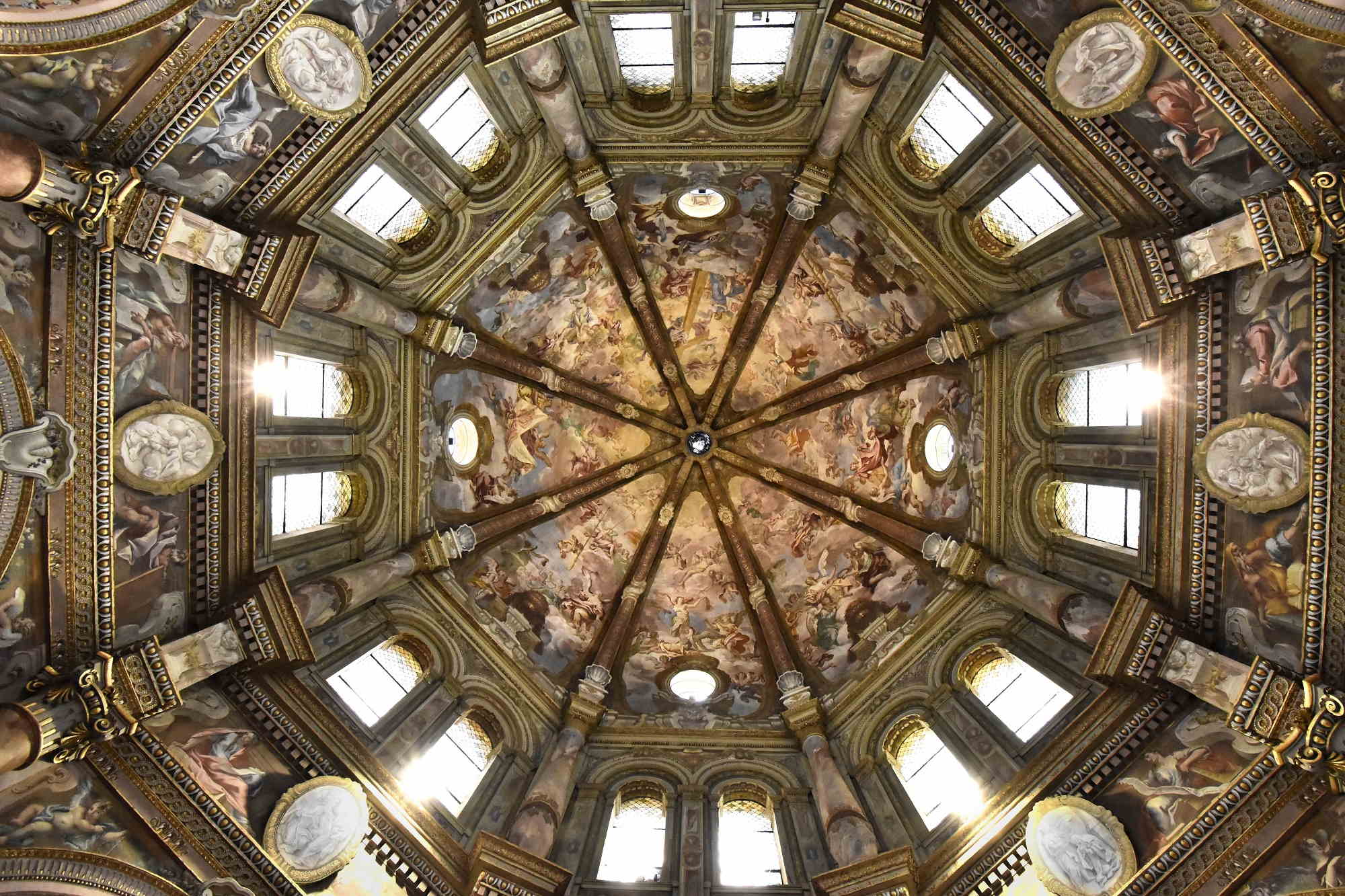
The outside is in the form of a great, central lantern, a superstructure which covers the curved surface of the dome, with three orders of galleries and flanked by four chapels. Inside the church has an octagonal form and is dominated by the amazing frescoed ceiling with the Trionfo della Croce.
Near the side altars, we can see the altarpieces, the works of Carlo Urbino, Bernardino Campi and Antonio Campi. On the main altar, there is a splendid painting by Benedetto Diana.
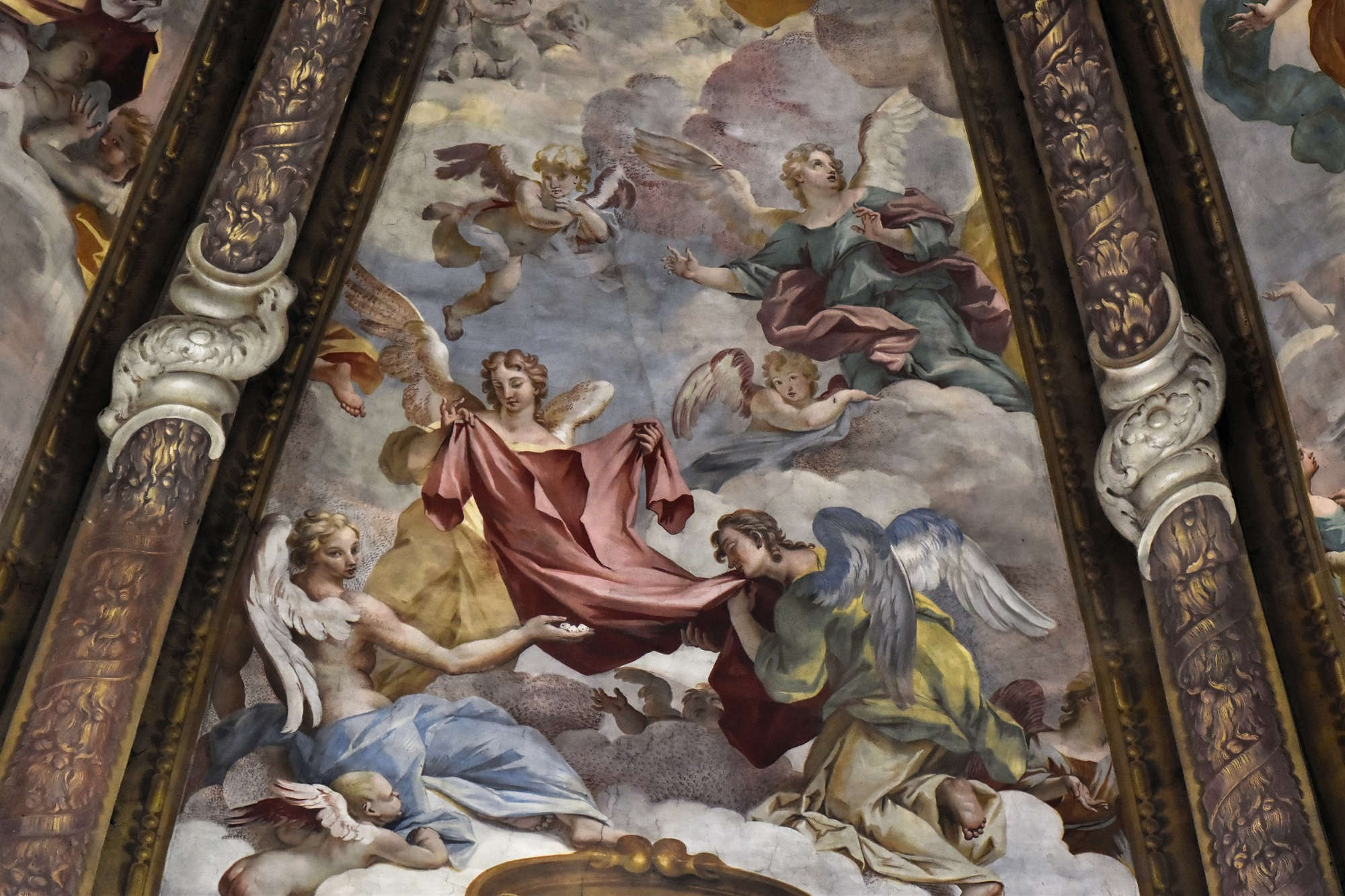
Info
The itinerary starts from Church of St. Benedict in Piazza Garibaldi

